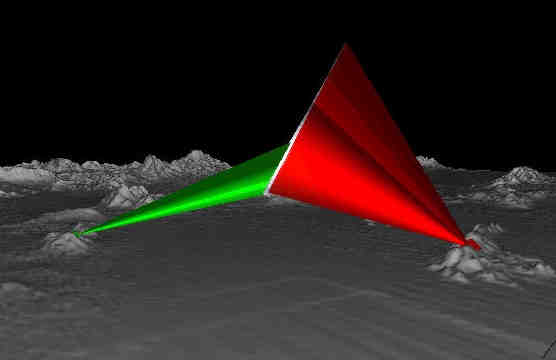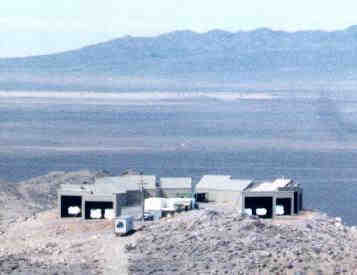| This experiment is studying the highest energy cosmic rays: particles
of order 10**17 - 10**20 eV that strike the earth's atmosphere. They initiate
giant showers in the atmosphere and our experiment detects these showers
by the fluorescence light emitted by nitrogen atoms excited by the shower
particles. The detectors are located on the tops of two desert mountains
in west central Utah where the "seeing" is very good.
The interactions of cosmic ray protons of energy greater than about 6 x 10**19 eV with the cosmic microwave background radiation is an important energy-loss mechanism for these protons, and is expected to be so strong that no particles above this energy should be seen if their sources are farther away than about 50 Mpc. The nearest known source that is large and energetic enough to accelerate a proton to such an energy is about 100 Mpc away, so our expectation is that no cosmic ray protons above this energy should exist. This is called the GZK limit. In 1991 a previous generation of our experiment observed a cosmic ray particle of energy 3.2 x 10**20 eV, and a handful of additional particles above the GZK limit have been observed by other experiments since that time. This is a serious dilemma. |
 |
 |
The goal of our experiment is to first confirm with good statistics
whether the GZK limit is actually violated (our preliminary data indicate
that it is), and second to study these remarkable events. For example we
will measure their arrival directions. If they all came from the same point
in the sky one would expect that the dilemma would have an astrophysical
solution: some new type of astrophysical source would be located there.
If they were isotropically distributed then perhaps a particle physics
solution to the dilemma would be indicated: perhaps there exists a metastable
particle of enormous mass, created at the time of the big bang, and we
are seeing its decay products. Either case is very interesting.
Our group consists of a postdoc, graduate and undergraduate students, and myself. We are building apparatus, taking data in Utah, and analyzing these data to study the high energy cosmic rays. |